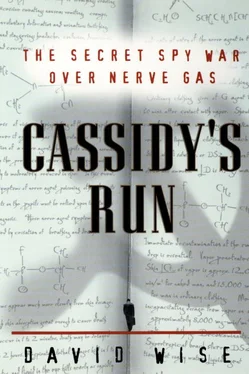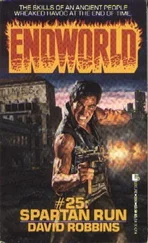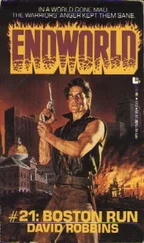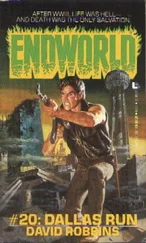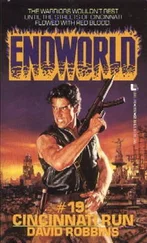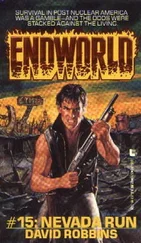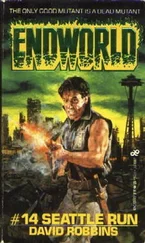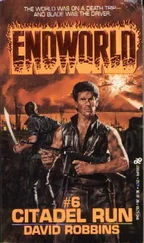According to Benjamin Harris, Edgewood’s former technical director, the formula for yet another deadly toxin may also have been passed to the Russians. Asked whether he was aware of any deception operations during his years at Edgewood, Harris replied, “I know they were engaged in that as a matter of course. I was aware of one incident where we were asked by the intelligence people to supply information on a toxin that was not a good candidate for use as a weapon.
“It was ricin. It was considered a toxin because it was produced by a living organism, the castor-bean plant. We did not consider it a good candidate because it was difficult to come by in large quantities and had not been synthesized at that time.” Harris was never told in so many words to what use the information was put, but he said his impression was that it was passed to the Soviets.
The Edgewood scientists did not consider ricin a good weapon, but the KGB did. During the evening rush hour on September 7, 1978, Georgi I. Markov, a Bulgarian émigré, writer, and opponent of the Soviet-backed regime in Sofia, was walking in London when a man jabbed him in the back of his right thigh with the sharp tip of an umbrella. Mumbling an apology, the man disappeared into the crowds. Four days later, Markov was dead, the victim of a tiny metal pellet containing ricin toxin.
After the collapse of communism, the new government of Bulgaria admitted that its spy agency had been responsible for the famed “poison umbrella” murder of Markov. More details were provided by General Oleg Kalugin, the former chief of counterintelligence for the KGB, who said that General Sergei Mikhailovich Golubev, of the KGB’s Directorate K, was dispatched to Sofia, along with a second officer, to advise the Durzhavna Sigurnost (DS), the Bulgarian secret service, on the hit. In Sofia, the ricin was tried on a horse, which died, and a prisoner, who did not, because the pellet failed to release the toxin. The KGB also provided the umbrella and the poison pellet that were used to kill Markov. It is at least possible, therefore, that the umbrella attack employed the formula that Benjamin Harris believed had been passed to the Soviets. [8] 7 Whether the information about ricin was passed to the Soviets, either in the deception phase of SHOCKER or in a separate, parallel counterintelligence operation, is not clear. In 1985, Vitaly S. Yurchenko, a senior KGB official, told the CIA about Special Lab 100, a laboratory in Moscow where KGB scientists developed and tested poisons for operational use. The Russians may have thus extracted ricin on their own.
Early in 1967,as Cassidy recalls it, two unusual events occurred on one night when he met with Danilin at the bowling-alley parking lot. When Cassidy picked up Danilin, a second man was with him. “This was the only time there were two men, and there was no explanation of why a second person.” In the parking lot, “Mike asked, ‘What did you put in the rock?’” Cassidy briefed the GRU man on the latest batch of documents he had copied with his rollover camera.
“And then he briefed me on what they wanted me to look for. And the three of us got in my car, a blue Oldsmobile, and drove off to a residential area nearby. Mike motioned me to stop and to get out of the car, which was unusual, because normally only he got out of the car. The normal thing was, after a meeting, I would drop him off and I would stay in the car. So all three of us got out, near a streetlight.
“Joe,” Danilin said, “this is my friend Mike, he’s a real good guy, and he’ll take good care of you.”
Cassidy was startled by what happened next. “[Danilin] gave me a bear hug and released me and held my head in both hands and kissed me on the cheek.
“And he said, ‘I’ll never see you again.’ It was dark, but from the streetlight I could see tears welling up in his eyes and slowly making their way down his cheek. It was a very emotional scene, and I was truly taken aback by it.”
To the FBI, Danilin’s tears were further evidence that the GRU man completely trusted WALLFLOWER. Danilin was parting sorrowfully from a revered and valuable agent. And if the Soviets believed in Cassidy, they might also believe in the bogus nerve-gas formula he had given them.
CHAPTER: 8
AND THE VOLGA TURNED WHITE
The Soviet nerve-gasprogram—the equivalent of Edgewood Arsenal, Dugway, and the other facilities in the United States—was run in secret laboratories in Moscow and in equally guarded test sites and production plants located along a five-hundred-mile stretch of the Volga River.
In Moscow, research and development was conducted at the State Scientific Research Institute of Organic Chemistry and Technology, at 23 Shosse Entuziastov, four and a half miles due east of the Kremlin, not far from Izmailovo Park, the site of the capital’s popular flea market. There, scientists experimented with sarin, soman, and VX and sought to create newer and deadlier forms of nerve gas as well. Some 350 miles to the east, the test sites and plants stretched almost in a straight line from north to south along the Volga River basin. In the north, in the Chuvash republic, some of the formulas created in the labs in Moscow were produced in a plant in Novocheboksarsk, a suburb of Cheboksary, the capital of the region.
About 250 miles to the south, near the city of Volsk in the Saratov region, were two Shikhany military sites where Soviet nerve gases were developed and tested. Finally, another 250 miles south in Volgograd was the Kirov Chemical Works, known as Khimprom, a major production site. Part of the facility was the Nazi nerve-gas plant captured by the Soviet army after World War II and brought back to Russia. The Moscow research institute also had a branch in Volgograd. [1] Formerly Stalingrad, the river port city was devastated in World War II, but the surrender of Hitler’s forces there in 1943 was the turning point for the Soviet army, which then went on the offensive along the eastern front.
In 1949, Boris Libman, a twenty-seven-year-old Latvian-born physical chemist and chemical engineer, began work at the pilot plant in Volgograd, in the section where nerve gases were produced and tested in small amounts. [2] In both the United States and Russia, the chemists in the pilot plants typically worked with small quantities and attempted to devise the processes that would take place in a full-scale plant. In a full-scale production plant, chemical engineers turned out nerve gas by the hundreds of pounds or tons. At Edgewood, nerve gases were tested initially in a process laboratory, even before the work moved to a pilot plant.
At the Volgograd plant, Libman’s work soon caught the attention of his superiors and by 1958—the year that Operation SHOCKER was created—he was named chief engineer. In 1960, he received the Lenin Prize for his work on both sarin and soman. The prize came with ten thousand rubles, a significant sum at the time.
Volgograd began producing sarin (GB) in the pilot plant in 1949 and went into large-scale production in 1959. It also began turning out small amounts of soman (GD) in the late fifties.
As the Soviet scientists attempted to divine what the United States was doing in its nerve-gas research and production, some of the information filtering to Libman and the officials at Volgograd had been gleaned by the espionage operations of the GRU. The intelligence data flowed to Volgograd from the Moscow research institute, which in turn received it from an arm of Soviet intelligence with the cover name of the Institute of Medical Statistics.
Additional intelligence information was provided to Volgograd directly by the chemical-intelligence unit of the GRU. The unit passed along data about U.S. research on binary nerve-gas weapons and about BZ, the incapacitant developed at Edgewood.
Читать дальше
